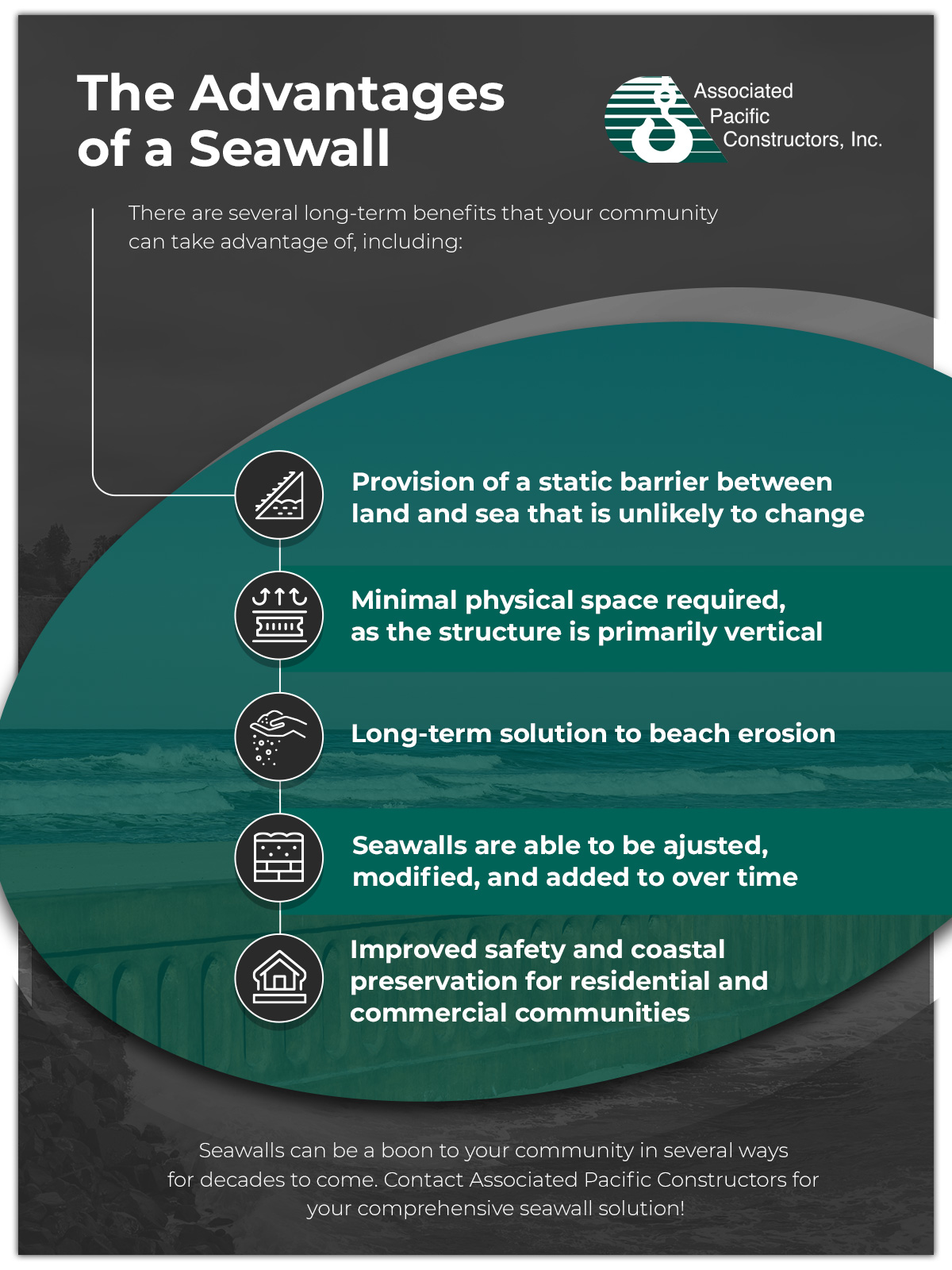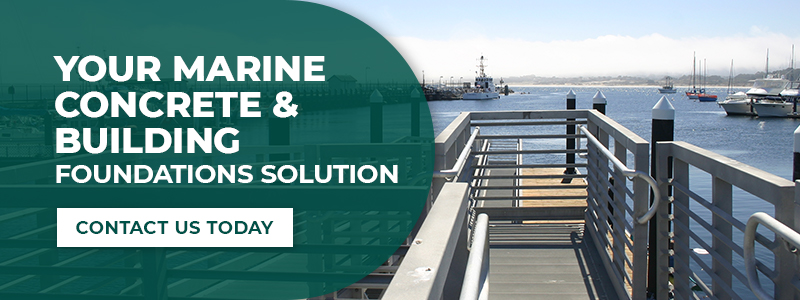The Advantages of a Seawall
Why Are Seawalls Important?
Changes in sea levels around the world cause an increase in wave and tide activity. In an effort to protect shorelines, especially around commercial and residential areas, the construction of seawalls is a necessity.
California’s coastline is no stranger to commercial attractions, including expansive tourism, fishing, commercial trade, and recreation. Because of the popularity of our coastline, countless coastline management projects have been implemented to protect and preserve them. Important in this effort for coastal preservation are seawalls.
For hundreds of years, one form or another of seawalls have been implemented to assuage the advancement of the sea, with evidence of such construction being done in the Roman and Ottoman Empires. Although the concept is ancient, these structures continue to be beneficial into the modern era, and Associated Pacific Constructors is proud to be able to call ourselves experts in the craft.

What Constitutes a Seawall?
At its most basic, a seawall is defined as a coastal defense structure that is implemented parallel to any given coastline or a significant body of water. Its primary function is to protect coastlines from erosion that would otherwise occur, thereby preventing unnecessary damage from ocean waves and tides to residential, recreational, and commercial locations.
How Seawalls Are Constructed
The construction of a seawall can vary as much as the coastline that it is designed to protect. Seawalls can be vertical or sloped, and can be constructed from any number of available materials.
Common varieties of seawalls include concrete barriers, block walls, rubble mounds, or sheet piling structures. Seawalls are designed to be permanent, heavy-duty structures, which requires that they be properly designed and engineered by experts and constructed by experienced contractors. These sturdy structures need to be able to stand up to years of pounding waves and the ebbing and flowing of tides.
The physical characteristics of seawalls can also affect the way in which they function. For example, smooth, straight seawalls can easily deflect the energy from incoming waves, while seawalls with intentional irregularities can help to diffuse wave energy by redirecting it.
Because seawalls will be receiving force from both the land and sea, their foundations are typically very deep in the coastal soil. Anchor systems are put into place that run deep into the soil, which helps seawalls to overcome the pressures applied by the earth.
Factors that Impact Seawall Expenses
The most obvious factors that can affect the construction expenses of a seawall are the location of the seawall and the water depth in that location. Typical estimates can run anywhere from hundreds of dollars per linear foot, to thousands of dollars, depending on the conditions. Permitting, engineering, and construction services are other necessary expenses. Fortunately, Associated Pacific can handle all aspects of your seawall project, including permit acquisition, design, and total project execution.
Additional variables that affect expenses include:
- Necessary height of seawall
- Anticipated amount of wave loads
- Numerous stages of construction
- Additional features such as guardrails
- Materials used in construction
- Availability of materials
- Labor costs
The Key Advantages of Seawalls
High-quality seawalls are by far one of the best investments a coastal community can make as a solution to coastal erosion and avoidable flooding problems. By nature of its permanence, a seawall should have several long-term advantages that can be benefitted from, such as:
- Provision of a static barrier between water and land that is unlikely to change due to erosion, as in natural beach areas
- Minimal physical space is required to construct a seawall, as the bulk of its construction is vertical rather than horizontal
- Long-term solution to beach erosion
- Although they are permanent structures, seawalls are able to be adjusted, modified, and added to over time as the needs may arise
- Seawalls provide a valuable commodity to the surrounding area, both as a safety measure and a coastal preservation tactic
- With proper maintenance, a seawall can continue to be effective in delaying coastal erosion for decades, if not centuries in some cases
Possible Barriers to Seawall Implementation
The biggest barrier to seawall construction (pun intended) is the overall cost. Fortunately, with a marine contracting company such as Associated Pacific that combines all of the necessary services in-house, those costs can be drastically reduced compared to hiring several different companies.
Effective seawalls require designs that are informed by thorough, comprehensive site analysis, as well as a familiarity with the region. With more than 40 years of experience in the marine construction business, we know what to expect in regards to seawall construction. In the absence of specialized contractors, experienced engineers, and high-level resource management, it could be difficult to successfully implement a seawall. With Associated Pacific Constructors, however, you get all of those things in spades.
Get Your Seawall Quote Today
Seawalls can be an incredible boon to your residential or commercial area here in California. If you would like to speak with an expert on the subject or would like to schedule a site assessment or quote, please do not hesitate to contact Associated Pacific Constructors today! Our goal is total customer satisfaction and a delivered final product that exceeds expectations in every aspect. Call the marine contracting team that you can trust now!

